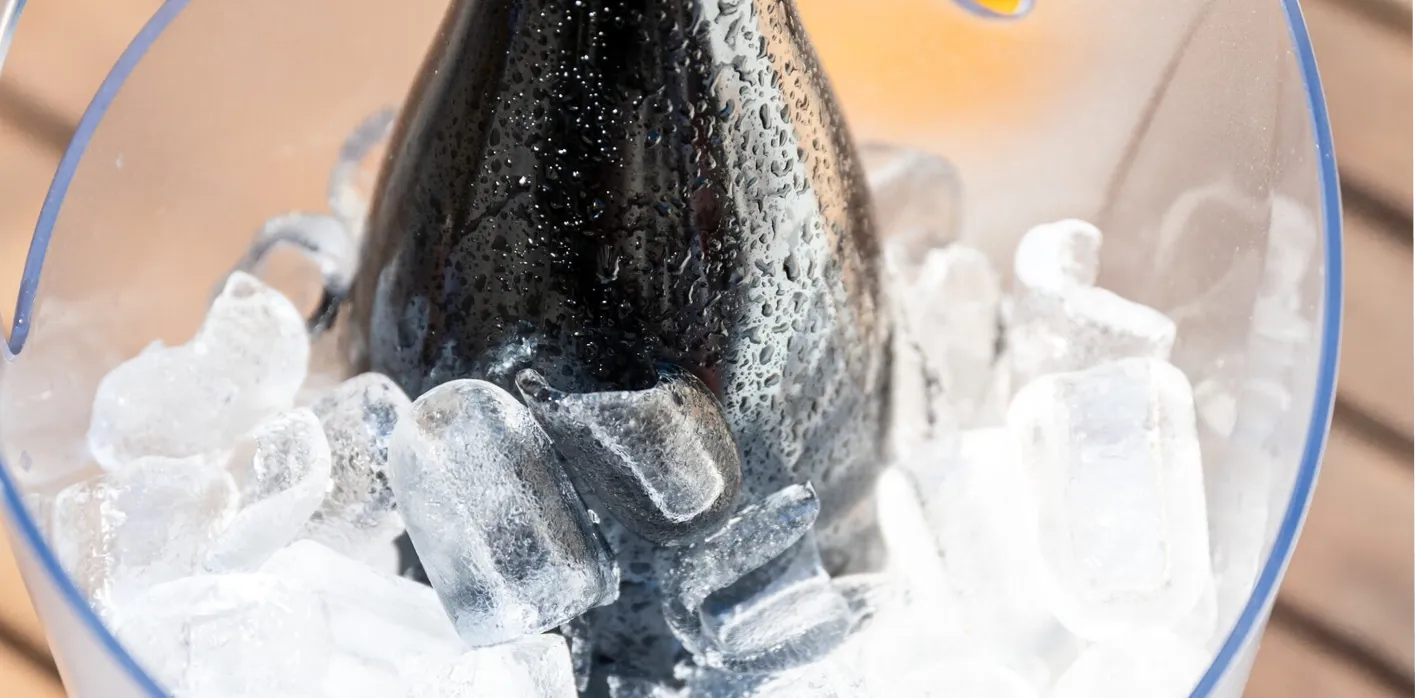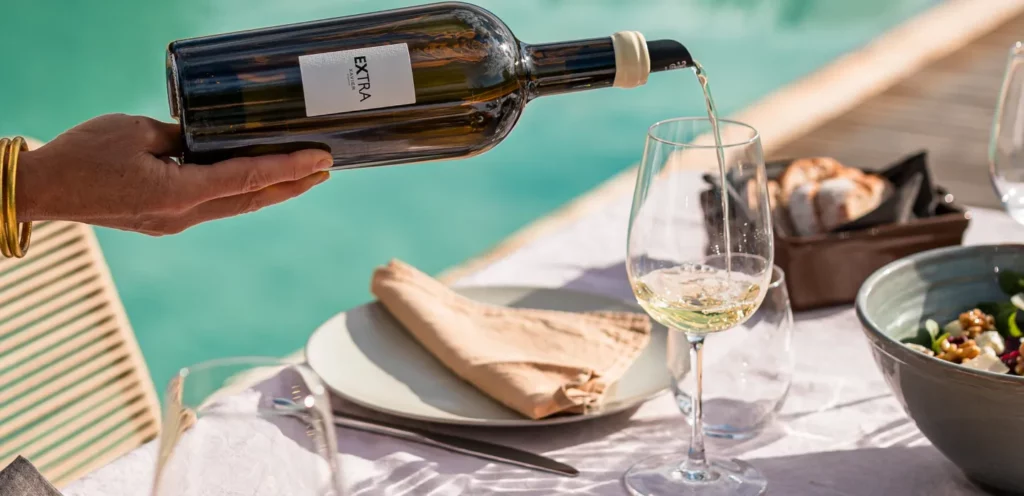Here in the Rhône Valley, we know a thing or two about scorching summers. At Xavier Vignon, when the sun’s blazing and the day’s winding down, nothing hits the spot quite like a chilled glass of wine.
But let’s be honest: when it’s over 30 °C and your bottle’s been lounging on the counter a bit too long, there’s one move that’s all too tempting: plopping an ice cube into your glass.
Is it a crime? A faux pas? A total blasphemy? Let’s clear things up once and for all.
Ice in your wine: Blasphemy or clever quick fix?
Let’s be real, in the world of wine, the mere thought of dropping an ice cube into your glass tends to spark strong reactions. And not without reason: ice melts fast. And when it does, it waters down the wine, dulls the aromas, messes with the structure, and can wipe out everything that makes a great bottle so special.
But here’s the truth: it all depends on the wine. Will an ice cube ruin a glass of white Châteauneuf-du-Pape? Almost certainly. But tossing one into a light rosé on a sweltering summer night? That might not be the end of the world. It really comes down to context, the quality of the wine, and — most of all — what you’re expecting from your glass.
At Xavier Vignon, we love our wines just the way they are. So yes, we’d rather not throw in anything that might mess with their magic. That said, here are a few smart alternatives to keep your wine refreshingly cool and tasting just as good as it does straight from the bottle.
1. The gold old ice bucket
A tried and true classic, and yet, we tend to forget about it. A bucket filled half with cold water, half with ice is hands-down the best way to keep your bottle at the perfect temperature all meal long. It’s gentle on the wine and seriously effective.
Pro tip: Keep a second ice bucket nearby if you’re hosting outside. A bottle left basking in the sun too long can go lukewarm faster than you’d think.
2. Chilling beads and cooling sticks
These nifty little tools popped up a few years ago and have quickly become must-haves for wine lovers who don’t want to compromise on taste. Just pop them in the freezer, then into your glass or bottle, and they will cool things down without melting, so there’s zero dilution.
You’ll even find wine chiller pourers that slot right into the neck of the bottle. They keep your wine cool and make you look like a pro when serving.
3. The damp towel freezer trick
Not the fanciest method out there, but when you’re in a pinch, it works like a charm. Dampen a kitchen towel, pop it in the freezer for about 15 minutes, then wrap it around your bottle.
The moisture speeds up the cooling process, and you’ll bring your wine down to the perfect temperature without the risk of shocking it like you might with ice.
4. The fridge…in moderation
Sure, the fridge is the obvious go-to. But don’t just toss your bottle in and forget about it! A white or rosé left chilling at the back for two days straight will lose some of its flavour and charm.
The sweet spot? Pop it in about two hours before you plan to drink it, and take it out ten minutes before serving. Just enough time to wake up all those lovely aromas.
A word of caution… ice-cold wine isn’t always a good thing
Let’s not forget one key rule: white and rosé wines should never be served freezing cold. When the temperature drops too low, aromas get locked away, your taste buds go numb, and even a fantastic wine can appear dull when it’s really not.
So what’s the sweet spot? For a crisp, dry white: aim for 8 to 10 °C. For a more structured rosé or a food-friendly white, closer to 12 °C.
The goal is always the same: to keep things fresh, but not freeze out the flavour. Because let’s face it: wine that’s too cold is like pulling a dish straight from the fridge. Even the best recipe in the world falls flat.
So… Should you be picking different wines when it’s hot out?
When summer hits hard, there’s more to think about than just serving temperature. The style of wine matters too. Are all whites and rosés suited to blazing heat? Not exactly.
On really hot days, it’s best to steer clear of rich, high-alcohol wines or anything too heavily oaked. They can feel heavy, unbalanced, and their natural freshness tends to get steamrolled by the heat.
On the flip side, zippy white wines with good acidity and little to no oak ageing tend to shine in warm weather. Our Côtes du Rhône Blanc is a perfect example: bright, lively, and still refreshing even when the temperature climbs.
Same goes for rosé: pale, crisp styles with a salty or citrusy edge will always fare better than those big, jammy ones.
And don’t count out light reds! Served slightly chilled (around 14–15 °C), soft, low-tannin reds can totally work with a summer meal, as long as you pick the right bottle.
Wine should just be enjoyed!
At Xavier Vignon, we have a deep love for precise and expressive wines, but that doesn’t mean we take ourselves too seriously. We’re just as fond of easygoing dinners, spontaneous lunches, and those unplanned apéros in the shade of a parasol. What really matters to us is enjoying wine in a way that feels joyful, free, and respectful.
Of course, we’ll always recommend serving it at the right temperature, with a bit of care and a good food match when possible. But we also know that every now and then, an ice cube in your glass isn’t the end of the world, and definitely doesn’t call for a lecture!
And if you’re curious about the real impact of ice cubes in wine, why not experiment? Taste the same wine at 6 °C, at 10 °C, and again at room temperature, and you’ll discover three different expressions of the same story. The right one is simply the one that speaks to you.
Cheers,
The Xavier Vignon Team


